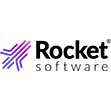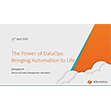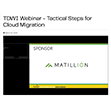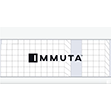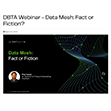
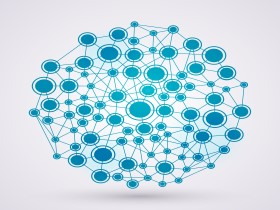
Data lakes are synonymous with Hadoop to many people grappling with the promise and the peril of big data. That’s not surprising, considering Hadoop’s unparalleled capability to gobble up petabytes of messy data. But for Barry Zane and other folks at Cambridge Semantics, data lakes are taking on a decidedly graph-like appearance.
Cambridge Semantics, which acquired Zane’s latest startup SPARQL City earlier this year, is beginning to talk about its concept of the smart data lake. The data lake concept is a well-worn one by now. The “smart” part, you may have guessed, owes to the semantic aspect of how the data is stored, how it’s connected to other data in the lake, and the way it impacts how people can extract meaningful information from it.
To Zane’s way of thinking, those who can get the most insights with the least amount of effort have an advantage. Of course, this has always been the case. But the telling part is the fact that Zane—who was founder and CTO of ParAccel (acquired by Actian) and a co-founder and VP of architecture at Netezza (acquired by IBM)–sees graph databases and graph analytic technology as the best way to get there for at least the next 10 years.
“We strongly believe that this is an extremely effective approach, a future-proof approach,” Zane tells Datanami. “Just as Hadoop basically came of maturity because relational just wasn’t able to work with a certain class of question and wasn’t able to work at a certain scale, we pursue those classes of questions and scale using the graph standards, at an incredible cost and performance advantage, as compared to hiring programmers for every question and analytic you want to perform.”
From Relational to Graph

Barry Zane, vice president of engineering for Cambridge Semantics
Zane, who is Cambridge Semantics vice president of engineering, sees graph databases—such as the Anzo Graph Query Engine–as a natural evolution from relational databases, which he says have developed some pretty powerful analytic capabilities themselves over the past 40 years.
“Without a doubt what we’re doing is educated by learning from Netezza, educated from learning from ParAccel. So I really see it a just an evolution,” Zane says. “The difference is you’re able to ask more interesting question of your data. You’re able to find relationships that are otherwise nearly to impossible to find.”
The core problem with relational database technologies—even the massively parallel processing (MPP) technologies that he championed at ParAccel (which powers Amazon’s Redshift data warehousing service) and Netezza (which IBM has renamed into something that nobody can ever remember)—is the ease at which advanced analytics can be performed, and the length of time it takes to get answers back.
“Being a longtime relational guy, one of the great things about the relational database is that you don’t need to be programmer. You’re able to work with the database through either a set of application layer tools or in the SQL language,” he says.
“The best way to think of SPARQL and RDF is that they’re just the next evolution of relational database SQL,” he continues. “That’s the way I think about it, and that’s what got me excited because you can have people who are not super high trained programmers be able to post queries of the data in a matter of minutes or hours and get back response in a matter of seconds or minutes, as opposed to hiring very highly trained and expensive programmers for any given query.”
Graph As Oracle
Zane sees graph databases giving us oracle-like powers to start with one set of facts and to drill outward to ask innumerable other questions from huge and connected data sets. That kind of power has never been available on a widespread basis, but graph is quickly making it possible, and having an impact in multiple industries.
 For example, say you’re a retailer selling sweaters, and you want to know how many sweaters to stock. A graph database can let you easily add other data sets, such as weather forecasts or social network data, which can let you spot trends and adapt to changing demand.
For example, say you’re a retailer selling sweaters, and you want to know how many sweaters to stock. A graph database can let you easily add other data sets, such as weather forecasts or social network data, which can let you spot trends and adapt to changing demand.
“Graph databases, and the technology behind graph databases and graph analysis, is all about working with that kind of stuff and being able to add in additional graphs of information, like demographics, weather, geographic information, and so forth,” Zane says. “It’s obviously very relevant in the life sciences space, where you might be relating genetic aspects to drug effectiveness to drug marketing, clinical trials and so forth. Likewise in financial services around trades. In national security [it helps to] find who the bad guys are.”
Data Rich, Insight Poor
Most of us are data rich these days, but insight poor, says Cambridge Semantic vice president of marketing John Rueter.
“The explosion of data is causing a great deal of pain to organizations,” he says. “Most organizations have been very good at collecting and storing information, but really have not done a very good job of making sense of that data and then being able to perform analytics on top if it.”
End users who are accustomed to having practically limitless amounts of data available to them will eventually come to depend on the capability of graph analytics to navigate it and make sense of it, he says.
“Everybody thought that big data would make everyone’s job easier, when it fact we know it’s made everybody’s job a lot harder,” he says. “End users are demanding and asking for the ability to have interactive data they can work with and go beyond just a traditional query, which almost goes linear in fashion, whereas here with the graph technology, you’re able to traverse all of the data and on a dime spin and ask new questions…It mimics the way we think and the way we want to ask questions of our data.
Product Positioning
While Hadoop-based data lakes compete on some level with Cambridge Semantics graph offering, called Anzo Graph Query Engine, it’s mostly complementary. In many instances, HDFS will be the repository for unstructured data sets before it’s loaded into the in-memory graph database.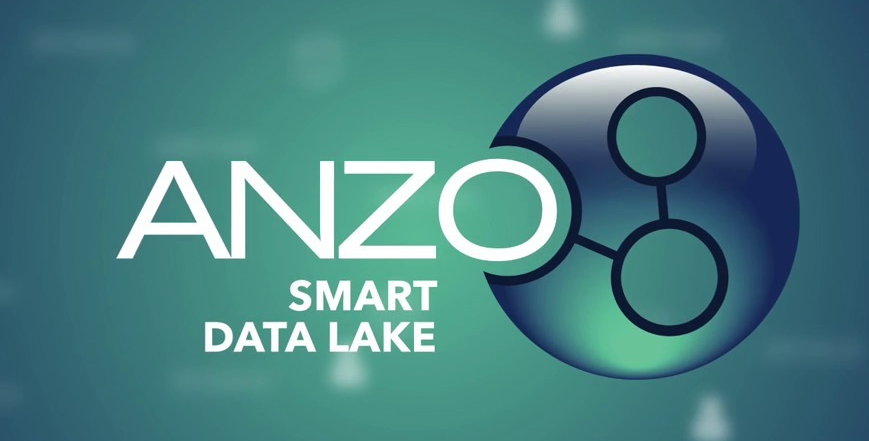
The marriage of Cambridge Semantics and SPARQL City makes a lot of sense when viewed through a technological lens. SPARQL City provided an in-memory graph database that could scale to great heights, while Cambridge Semantics provided the tooling that made it more useful.
“As a standalone company, SPARQL City had a great massively parallel database architecture and likewise Cambridge Semantics has a great architecture and product for doing knowledge and data management and the associate visualizations, ETL, and so forth,” Zane says. “So it was just plain very natural that we combined. That way as a single company we could provide the entire stack.”
Yesterday Cambridge Semantics announced that customers can now buy the varous big data products—including the Anzo Graph Query Engine and Anzo Smart Data Manager–as stand-alone products. Users can also buy it as part of the Cambridge Semantics’ Anzo Smart Data Lake offering.
Related Items:
Cambridge Semantics Buys Graph Database Specialist
The Bright Future of Semantic Graphs and Big Connected Data
Hadoop, Triple Stores, and the Semantic Data Lake
September 11, 2025
- MinIO Brings Hyperscaler Economics On-Prem with AIStor Pods
- Honeycomb Introduces the Developer Interface of the Future with AI-Native Observability Suite
- AdaParse: Smart PDF Processing for Scientific AI Training
September 10, 2025
- Progress Software Launches SaaS RAG Platform for Verifiable Generative AI
- Sigma Reveals New AI, BI, and Analytics Features, Redefining Data Exploration Capabilities for Customers
- Couchbase Shareholders Approve Acquisition by Haveli Investments
- Plotly Launches Studio and Cloud with GA as Vibe Analytics Event Approaches
- Expert.ai Launches Enhanced Solutions for Digital Information Services
- ThoughtSpot Redefines Analytics with Boundaryless, Agentic Intelligence
- Perforce Expands AI Capabilities to Boost Speed and Security in Software Development
- DiffusionData Releases Diffusion 6.12
September 9, 2025
- Algolia Unlocks Clean, Contextual Data at Scale with Introduction of Intelligent Data Kit
- CTERA Announces IntelliVerse 2025: A Free Virtual Forum on Data Readiness and AI in Digital Transformation
- Pliops Showcases XDP LightningAI’s Proven Impact at AI Infra Summit 2025
- MLCommons Releases New MLPerf Inference v5.1 Benchmark Results
- Monte Carlo Launches Agent Observability to Help Teams Build Reliable AI
- Sphinx Launches with $9.5M to Redefine How AI Works with Data
- NetApp Modernizes Object Storage with Enhanced Speed, Scalability and Security
- Sourcetable Launches Superagents to Bring Autonomous AI Into the Spreadsheet
- CoreWeave Launches Ventures Group to Invest in Future of AI
- Inside Sibyl, Google’s Massively Parallel Machine Learning Platform
- What Are Reasoning Models and Why You Should Care
- Rethinking Risk: The Role of Selective Retrieval in Data Lake Strategies
- Beyond Words: Battle for Semantic Layer Supremacy Heats Up
- Software-Defined Storage: Your Hidden Superpower for AI, Data Modernization Success
- The AI Beatings Will Continue Until Data Improves
- Why Metadata Is the New Interface Between IT and AI
- Top-Down or Bottom-Up Data Model Design: Which is Best?
- How to Make Data Work for What’s Next
- What Is MosaicML, and Why Is Databricks Buying It For $1.3B?
- More Features…
- Mathematica Helps Crack Zodiac Killer’s Code
- GigaOm Rates the Object Stores
- Solidigm Celebrates World’s Largest SSD with ‘122 Day’
- Promethium Wants to Make Self Service Data Work at AI Scale
- Databricks Now Worth $100B. Will It Reach $1T?
- AI Hype Cycle: Gartner Charts the Rise of Agents, ModelOps, Synthetic Data, and AI Engineering
- Data Prep Still Dominates Data Scientists’ Time, Survey Finds
- Career Notes for August 2025
- MIT Report Flags 95% GenAI Failure Rate, But Critics Say It Oversimplifies
- Anaconda Report Links AI Slowdown to Gaps in Data Governance
- More News In Brief…
- Seagate Unveils IronWolf Pro 24TB Hard Drive for SMBs and Enterprises
- DataSnap Expands with AI-Enabled Embedded Analytics to Accelerate Growth for Modern Businesses
- Gartner Predicts 40% of Generative AI Solutions Will Be Multimodal By 2027
- Acceldata Announces General Availability of Agentic Data Management
- Hitachi Vantara Recognized by GigaOm, Adds S3 Table Functionality to Virtual Storage Platform One Object
- Transcend Expands ‘Do Not Train’ and Deep Deletion to Power Responsible AI at Scale for B2B AI Companies
- Pecan AI Brings Explainable AI Forecasting Directly to Business Teams
- SETI Institute Awards Davie Postdoctoral Fellowship for AI/ML-Driven Exoplanet Discovery
- NVIDIA: Industry Leaders Transform Enterprise Data Centers for the AI Era with RTX PRO Servers
- Ataccama Data Trust Assessment Reveals Data Quality Gaps Blocking AI and Compliance
- More This Just In…
















